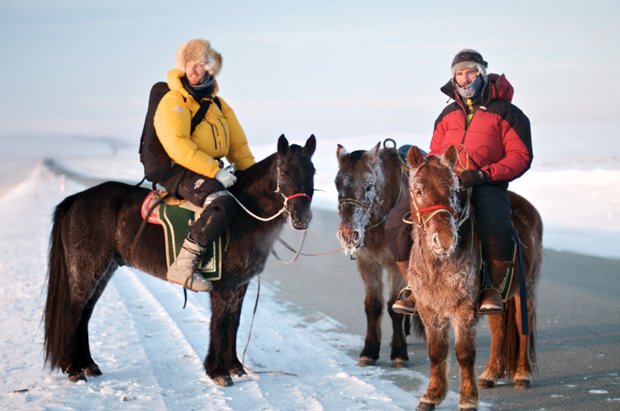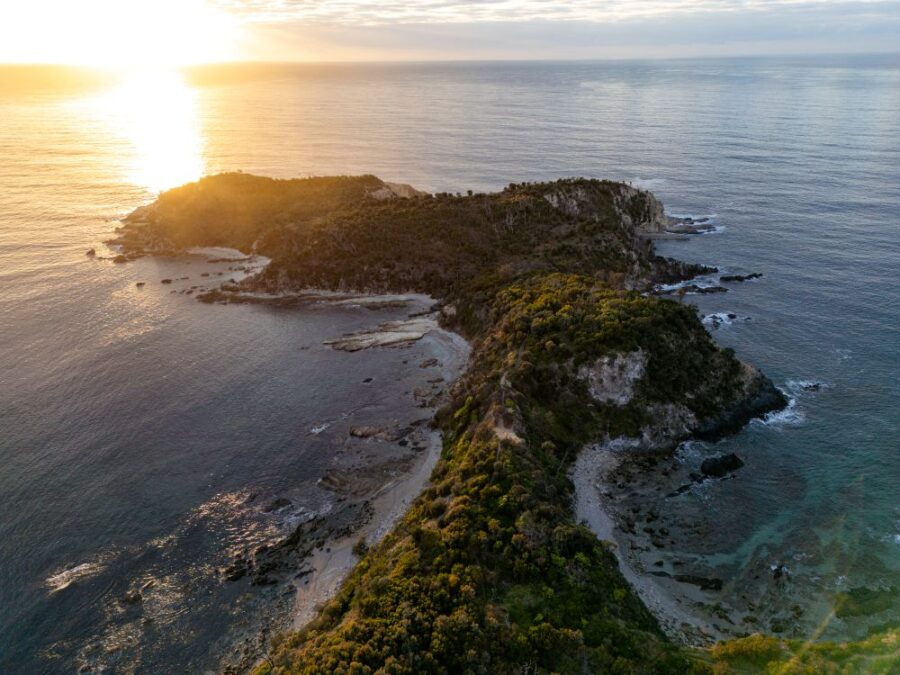Across Mongolia by horse, camel and ski

MY COUSIN DIED IN an avalanche. Tom was 21 and a champion. At Tom’s funeral someone, maybe it was me, suggested three of us – my two other male cousins, Peter (Tom’s brother) and Angus (Gus) – plan an expedition in honour of Tom. It’s what any of us would have wanted if we’d suffered the same fate – and that’s what got us to Mongolia.
We agreed that it needed to be a true adventure, which meant that during the planning, every time there was a choice, we’d choose the more difficult option. We arrived at a plan to cross Mongolia, in the middle of winter, without motorised transport. That meant staying with nomads or in tents – it also meant travelling on horseback and camel, kite-skiing when there was wind and making our way on foot when the weather was milder. We weren’t sure if it could be done but we planned it all the same.
The journey started in December, 2009, leaving from a town called Altanbulag, just inside Mongolia on the border with Russia, about 100 km south of Lake Baikal (the world’s oldest and deepest lake). We went as far south as we could go in the month we had, which was 500 km.
Work in Sydney delayed my start, so I met up with Pete, Gus and our Mongolian guide, Temujin, at the only real airport in the country, in Ulan Bator. The team picked me up on horses, which they’d already named Chocolate Rain, Blackie, Chuck Norris (who was generally difficult and had another name that we can’t use here!) and Bung Eye. We left Bung Eye behind in the capital, as he was crook.

Cousins (L-R) James Kell, Peter Carr-Boyd and Angus Kell.
Beyond cold in Mongolia
We went through the capital Ulan Bator, a city dominated by a massive powerplant, making a huge cloud in an otherwise clear, blue, cold sky. It’s like the Soviet push towards “modernisation through industrialisation” is still in vogue in that town.
As it turns out it was the coldest Mongolian winter in living memory. And Mongolia in winter is cold. In the sun, with no wind, the temperature would hover around -50ºC. The best description of -50ºC is “no joke”. If anything goes wrong, it is no joke – that’s when fingers and toes fall off, or hypothermia and death within half an hour. Wind also introduced wind chill, which would bring the effective temperature to somewhere around -70ºC. Cool.
The modes of travel didn’t necessarily interact very well, either, once we were out in the thick of it. On one day, for example, a decent wind whipped up so we decided to launch our kites; this completely freaked the camels out – one of which was lost for an hour when he pulled from his tether. And an hour in -50ºC with a 20-knot wind is not much fun.
VIDEO: Crossing Mongolia on camel, horse and kite ski
Harsh living
The Mongolians at one point controlled more land than the Roman Empire had at its height. This was done by one man, Genghis Khan. Around 800 years later and the country is still totally dominated by Genghis. Even today the Mongolians only number two million. A good proportion of them are nomadic, moving their camps four times a year.
Mongolians are tough. They need to be. One day, as the light was fading – and we had very, very cold feet, and were feeling the hunger from a body working all day to maintain its heat and stay on the horse – someone spotted a distant ant-trail of goats heading back to their owner. We followed them and found a ger, the modest, circular dwelling of Mongolians.
We knew the drill. Tether the horses; leave their saddles on until they cooled down, lest their sweat freeze on them; crouch down to enter the ger; sit down; be handed a cup of tea; then be greeted our hosts, solemn, then warm.
There never seemed to be any surprise to see three westerners on horseback in the middle of Mongolia in mid-winter. Not that they had ever seen any before. Our hosts would feed us and put us up in their ger for the night. That we gave them money the next morning before we left was never expected, but never refused.
A ger is a wonderful piece of architecture. They build it in one day from a latticed timber frame and felt covering. It works in mid-summer with temperatures hovering around 40ºC, and in mid-winter when they hit -50ºC. The stove is in the centre of the ger; without it you are dead. The fuel is dung – a commodity which occupies an important place in this society. On New Year’s Eve, somewhere in the Gobi Desert, drunk on vodka and pickles, we found ourselves helping our hosts “prepare” dung by sifting it through our fingers. The vodka helped.
Gers force you to face others. Gers force transparency, for there are no corners in a ger. This shapes their society. Open, respectful, always talking quietly, the Mongolian way rubs off on you in these places. You find yourself doing just that when sitting in a ger.
Challenges in the Gobi Desert
Although we found it was indeed possible to use non-mechanical means to cross the country in mid-winter, the journey took us much longer than we expected. Given the horses and camels were working in such extreme conditions (particularly horses, as camels seemed more robust in the environment and were certainly more stupid in a climate where stupidity can be an asset), we could only ever average 20-25km per day on horse and a bit more on camel.
We had to end the expedition ended just north of Choir, in the Gobi Desert, after Temujin our guide came down with what we thought was probably appendicitis. We covered about 500 km of the roughly 800 km journey before we aborted. We were not keen to have a burst appendix in the middle of the Gobi in winter, so we decided to end the trip at that point. The doctors in Ulan Bator confirmed appendicitis and operated immediately, saying it was about to burst.
Back in Sydney after the trip, I went back to my hectic Western life. Writing trip notes on a computer with another computer close by, my iPhone buzzing to tell me a text had arrived. About to drive to dinner, with all these gadgets and conveniences around me, I though about the simple and hard, but happy life the Mongolians lead. I wondered if our relentless pursuit of progress is leading us to greater happiness?
LAUNCH MONGOLIA GALLERY
RELATED STORIES




